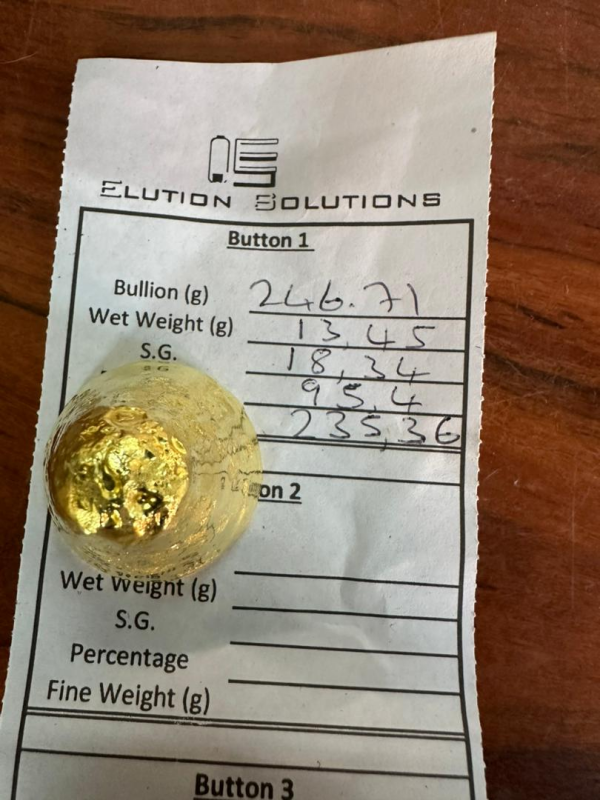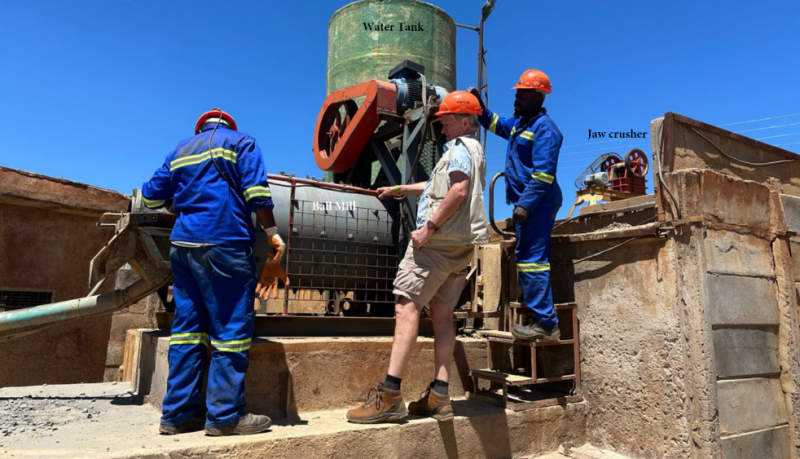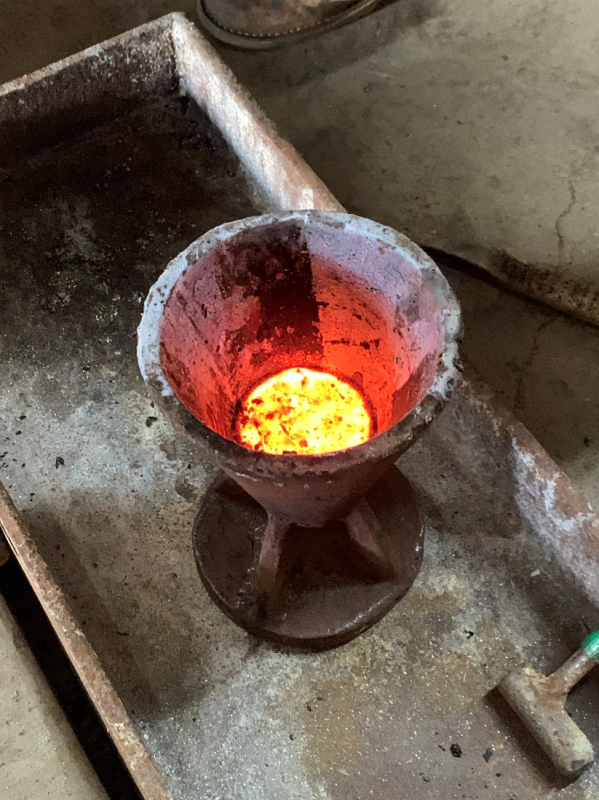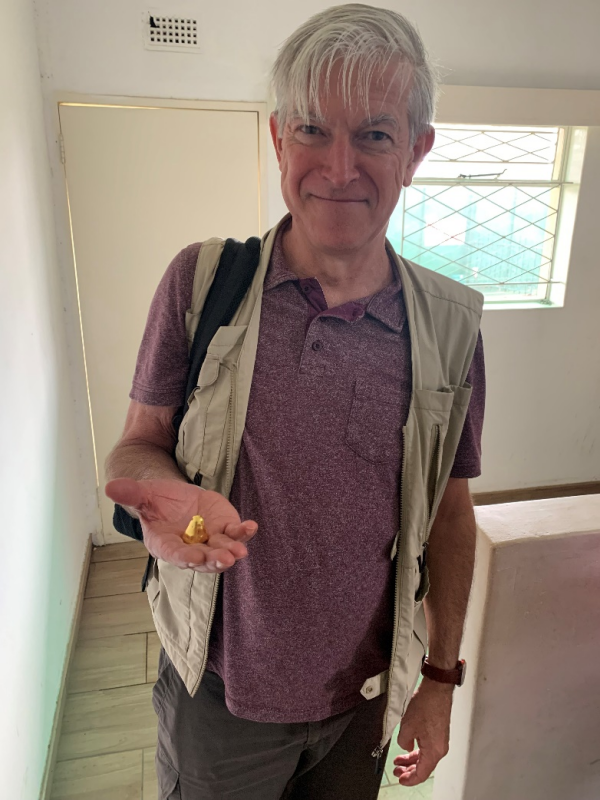Archive
Pambili Natural Resources: Bringing Golden Valley's Production Plant Back Online
 | |||||||||
 |  |  | |||||||
CALGARY, Canada (Oct. 3, 2024)— TheNewswire – Pambili Natural Resources Corporation (TSX-V: PNN) is steadily pushing forward following the TSXV’s recent approval of our acquisition of the Golden Valley Mine in Zimbabwe.
We’re making strong progress on our planned underground drilling program, which is designed to identify near-term sources of ore at the mine.
At the same time, Pambili has also brought Golden Valley’s existing processing plant back into production. Read on to learn and see how gold from two separate streams is processed onsite:
-
ore mined elsewhere by third parties elsewhere, which is processed through our stamp mill and leach tanks;
-
our own ore mined at Golden Valley, which is processed via our jaw crusher, ball mill and leach tanks.
First gold from Pambili’s Golden Valley Mine, following onsite processing of underground development material and historic sands on surface.
Third-party ore: Stamp mill
The stamp mill at Golden Valley is a potential source of revenue for Pambili through the crushing of third-party ore.
The stamp mill pulverizes rock to fine particles, thereby liberating the so-called “free gold” from the ore.
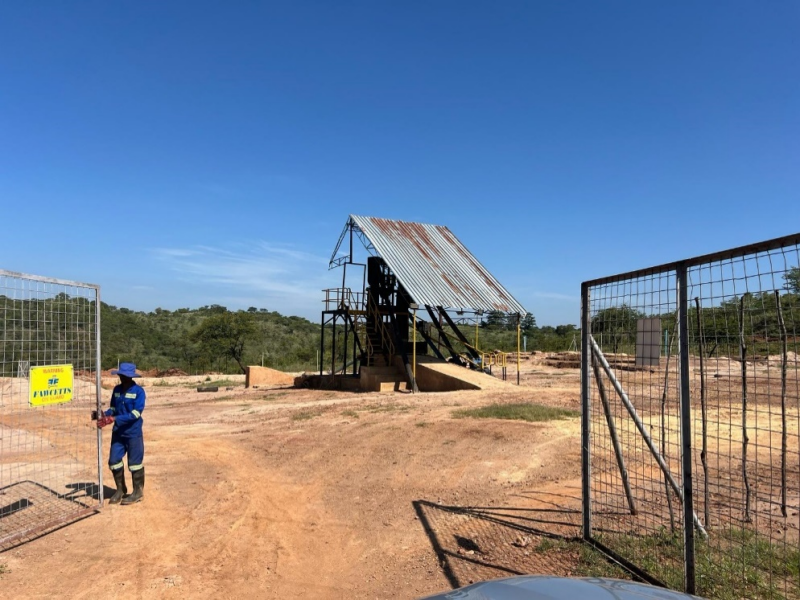
Click Image To View Full Size
Offsite stamp mill at Golden Valley, where third-party ore is processed.
That free gold, also known as “visible” gold, is then recovered through simple gravity separation and goes to the third-party miner.
Pambili, as the stamp mill operator, keeps the sands that contain the disseminated gold.
This gold is recovered chemically in the Golden Valley leach tanks. From there, it’s put through a carbon elution process and melted down in an arc furnace (see details below in the leaching tanks section)—effectively becoming Pambili’s fee for crushing the third-party ore.
Golden Valley ore: Jaw crusher and ball mill
For ore mined at Golden Valley, Pambili has a batch processing plant onsite which consists of a crushing and grinding circuit, gravity separation and cyanide leach tanks.
The jaw crusher reduces ore particle size down to 10 millimeters or less. Particles are then fed into the Golden Valley ball mill.
The onsite ball mill is filled with grinding balls, which Pambili uses to break down large amounts of hard rock ore into fine powders, known as “sands,” at a size of about 75 microns.
Ball mill output goes through a gravity separation process to recover free gold, while the remaining sands are fed into the leach vats.

Onsite ball mill, center-left, at Golden Valley.
Meanwhile, the remaining Golden Valley sands—as with the third-party sands above—are fed into the onsite Golden Valley leach tanks, where gold is recovered chemically. From there, it’s put through a carbon elution process and melted down in an arc furnace.
Gold being melted down in an arc furnace.
Again, see the leaching tanks section below for details on the final steps of gold recovery.
Leaching tanks: A critical step in extraction
The image shows the vat leach tanks at Golden Valley where reprocessing begins to take place. These static leach tanks, as described above, are loaded with sands from both the third-party stamp mill stream and the Golden Valley jaw crusher/ball mill stream.
The disseminated gold in the sands is then recovered by leaching the sands with a weak sodium cyanide solution. The gold is stripped from the cyanide solution using activated carbon, again in static tanks, with the cyanide solution being recycled through the leach tanks. The process continues until chemical testing determines that the available gold has been recovered—a process which typically takes seven days.
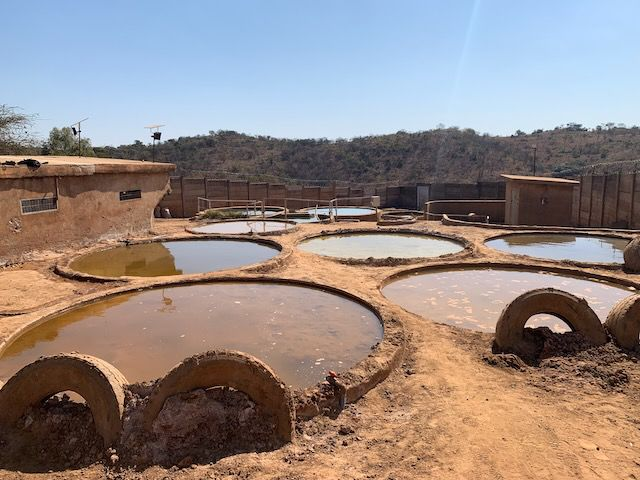
Static leach tanks at Golden Valley.
The gold-impregnated carbon is then taken for elution at a third-party elution plant, where the gold is recovered from the carbon using sodium hydroxide in pressurized boilers. The gold is finally “electroextracted” from the caustic solution through electrolysis using wire wool as the cathode.
In a separate process, the wire wool is dissolved using a mixture of sulphuric and nitric acids to leave a gold concentrate. This is dried and then smelted, together with any free gold and a borax flux, in an electric arc furnace. The molten gold is then poured into a mould.
The elution plant is an accredited buyer of gold—and pays for gold on the spot.
Pambili CEO Jon Harris holds a gold button from Golden Valley processed at our onsite production plant.
Leaving nothing to waste: Loading and reprocessing sands
Here, you can see the fine sands being loaded on to a dumper for transportation to Golden Valley’s reprocessing facility.
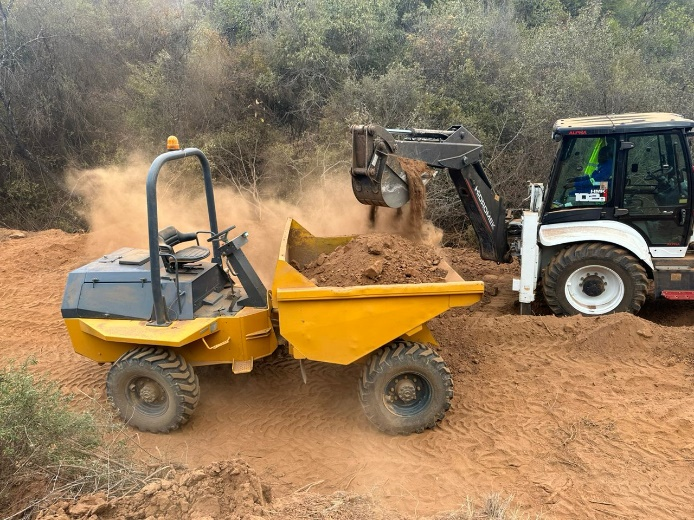
A dumper takes on fine sands at Golden Valley for reprocessing.
In mining, reprocessing refers to refining raw ore with limited commercial value into usable minerals that can be sold to end users.
Upgrading, modernizing production facilities at Golden Valley
Bringing Golden Valley’s existing plant back online forms an excellent basis for growing production at the project site.
Once we’ve determined the scale of additional sources of ore, our goal is to upgrade and modernize its production facilities to expand their capacity.
We look forward to providing updates on our progress at the project over the coming weeks and months.
